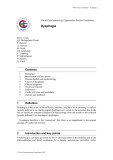
Document Dysphagia
Xem 1-1 trên 1 kết quả Document Dysphagia
-
Document introduction of content: Definition, introduction and key points, disease burden and epidemiology, causes of dysphagia, clinical diagnosis, treatment options, references, useful web sites and guidelines.
 14p
14p  vovanvovan2013
vovanvovan2013
 13-05-2016
13-05-2016
 43
43
 2
2
 Download
Download
CHỦ ĐỀ BẠN MUỐN TÌM
TOP DOWNLOAD














